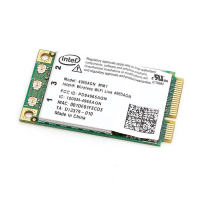Back to Contents
Glossary of Terms
Numerical A B C D E F G H I L M N O P R S T W
Term Definition
802.11 The 802.11 standard refers to a family of specifications developed
by the IEEE for wireless LAN technology. The 802.11 specifies an
over-the-air interface between a wireless client and a base station
or between two wireless clients and provides 1 or 2 Mbps
transmission in the 2.4 GHz band using either frequency hopping
spread spectrum (FHSS) or direct sequence spread spectrum
(DSSS).
802.11a The 802.11a standard specifies a maximum data transfer rate of
54 Mbps and an operating frequency of 5 GHz. The 802.11a
standard uses the Orthogonal Frequency Division Multiplexing
(OFDM) transmission method. Additionally, the 802.11a standard
supports 802.11 features such as WEP encryption for security.
802.11b 802.11b is an extension to 802.11 that applies to wireless LANS
and provides 11 Mbps transmission (with a fallback to 5.5, 2 and 1
Mbps) in the 2.4 GHz band. 802.11b uses only DSSS. Throughput
data rate 5+ Mbps in the 2.4 GHz band.
802.11g The 802.11g standard specifies a maximum data transfer rate of
54 Mbps, an operating frequency of 2.4GHz, and WEP encryption
for security. 802.11g networks are also referred to as Wi-Fi
networks.
802.11n A taskgroup of the IEEE 802.11 committee is in the process of
defining a standard for high throughput speeds of at least 100Mbps
on wireless networks. The standard is expected to be ratified by
2007. Some proposals being fielded by the taskgroup include
designs for up to 540 Mbps. Multiple-Input-Multiple-Output (MIMO)
technology, using multiple receivers and multiple transmitters in
both the client and access point to achieve improved performance
is expected to form the basis of the final specification.
802.1x 802.1x is the IEEE Standard for Port-Based Network Access
Control. This is used in conjunction with EAP methods to provide
access control to wired and wireless networks.
AAA Server Authentication, Authorization and Accounting Server. A system to
control access to computer resources and track user activity.

